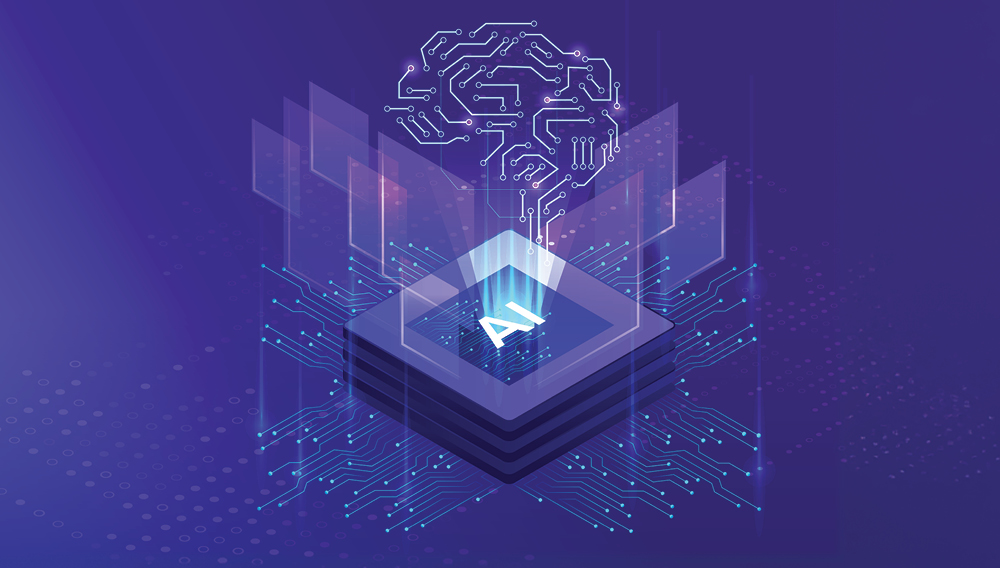Machine Learning in Computer Science

Machine learning is transforming the field of computer science. Machines that learn from data can identify patterns, make predictions, and automate decision-making, all at tremendously fast speeds. A career in this field puts you at the heart of technologies that are shaping the future of intelligent systems.
What Is Machine Learning?
Machine learning (ML) is a type of artificial intelligence that encompasses systems that can analyze and learn from data without being programmed. Instead, they “study” data and detect patterns, a process called training. Through this training, machines learn and can make predictions and decisions. ML is accomplished through both supervised learning and unsupervised learning techniques:
- Supervised learning trains machines with labeled data that is paired with a known output. You might train a machine with data about the size and location of a house paired with prices. When presented with data about a property, the machine, having learned the patterns of how size and location affect price, can then predict what the real estate will be listed at.
- Unsupervised learning trains a machine without labeling the data inputs or predefining outputs. Instead, the machine explores data to find relationships, clusters, and even anomalies. This kind of training is good for finding hidden insights. Machines with this kind of training can detect fraud by analyzing transaction data or segment customers by examining their purchase habits.
What Is the Difference Between AI and Machine Learning?
Many people use the terms “machine learning” and “artificial intelligence” interchangeably. While related, the concepts are different.
Artificial intelligence, or AI, is the umbrella term for a range of technologies that simulate the way humans think, including observing, deducing, reasoning, solving problems, understanding language, predicting, and making decisions.
Subfields of AI include robotics, expert systems, virtual assistants, natural language processing, and machine learning. AI is a technology concerned with the what of achieving intelligence, whereas ML is concerned with the how of learning from data. ML is a subset of AI, with a narrower focus on data-driven learning.
You can also have subsets of subsets of AI. Neural networks, a subset technology of machine learning, mimic how the human mind functions, working like a network of neurons to recognize patterns in large, complex data.
What Are Some Common Techniques?
Common machine learning techniques achieve different purposes.
Clustering
This unsupervised learning technique trains machines to classify data points into groups based on similar attributes. For example, social media sites look at your behavior to suggest content and friend recommendations. Retailers analyze customer activities to learn that dads who buy diapers often also buy beer on the same shopping trip.
Decision Trees
This supervised learning technique trains machines to make decisions based on attributes that branch into outcomes. If machine learning detects symptoms one, two, and three, it can then classify a person as having a specific disease. ML can look at historical sales data, combined with economic statistics, and forecast product sales. It can look at customer attributes and behaviors and provide a credit score and risk assessment.
Regression
Regression is another supervised learning technique used to predict outcomes. ML that predicts the price of a house based on its location and size is an example of regression. You might use regression to model a patient’s risk of developing heart disease. Another type might look at your goals and time horizon, combined with market and economic data, to recommend an investment to you.
What Are Some Uses of Machine Learning?
With a career in machine learning, one of many career paths open to you with a degree in computer science, you’ll have the opportunity to work on a dizzying array of industry applications, including:
- Recommendation systems that suggest the next video to watch on YouTube or related product to buy on Amazon
- Virtual assistants like ChatGPT or Siri
- Predicting sales levels, inventory needs, credit risks, or stock market movements
- Health care enhancements, such as assessing risks of contracting a disease, diagnosing conditions, and even identifying promising drugs
- Image and video analysis through neural networks to identify intruders, flag misused copyrighted material, and even help autonomous vehicles spot landmarks and hazards
- Natural language processing, used for everything from translating languages to analyzing social media posts for sentiments to converting spoken words to written transcripts
- Detecting crimes like bank fraud, network break-ins, and other threats, which you’ll learn about if you pursue a cybersecurity degree
- Optimizing to supply chains, routes and schedules, prices for flights and rides, and even how building systems work
This list scratches the surface of how ML is used today. With the field exploding, new applications are coming fast. Demand for people who can work across diverse applications is high. Artificial intelligence and machine learning are fast becoming essential to many industries, suggesting job security, diverse opportunities—with highly competitive salaries—and the chance to make a significant impact.
The right education is a first step on your path to a rewarding career in machine learning. We invite you to explore Excelsior University’s computer science program to learn more.



